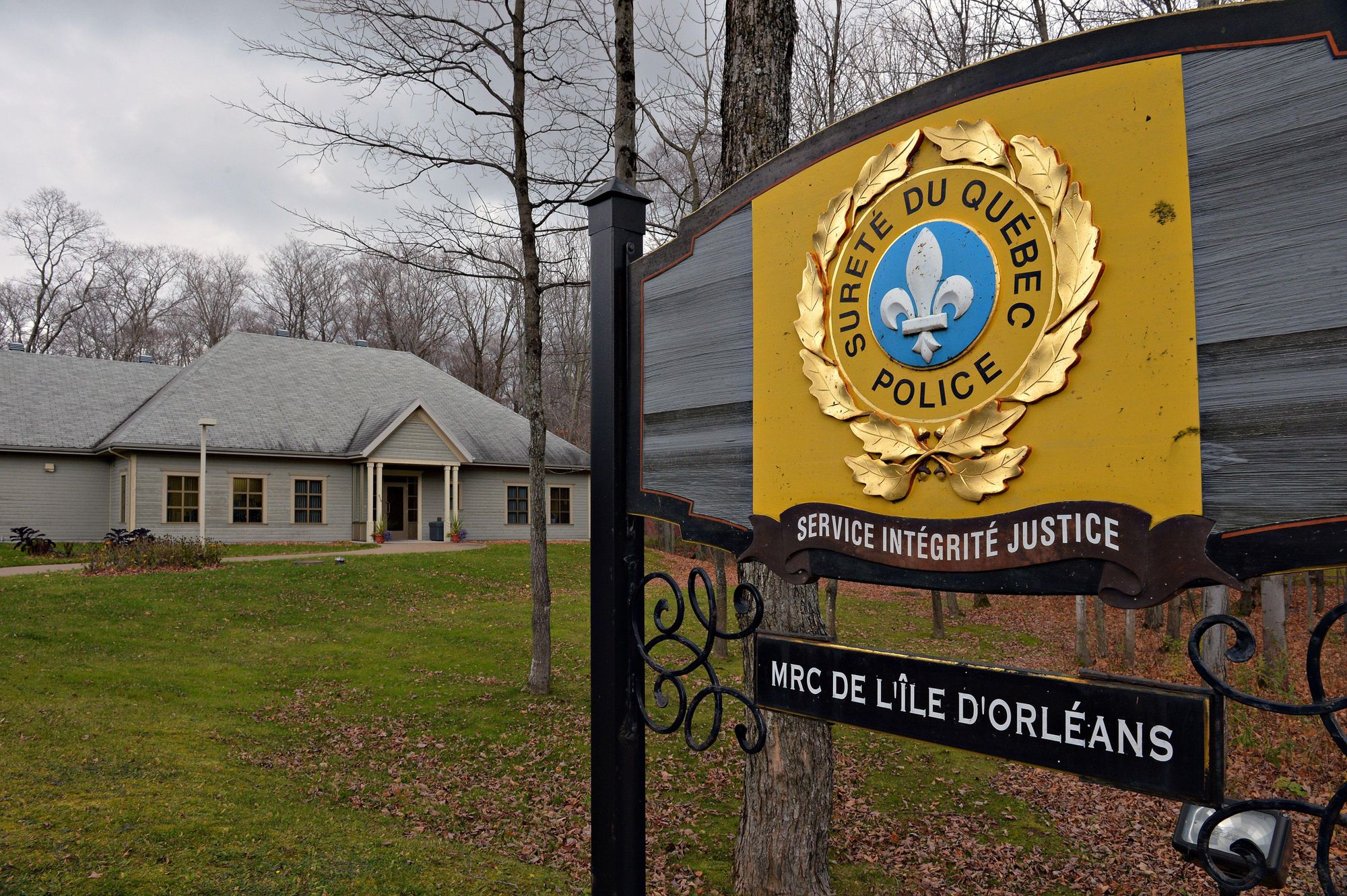Louise Penny’s Armand Gamache: Quebec’s Too-Perfect Police Officer
Detective stories are so popular in our culture that those of us lacking experience of the real life variety sometimes have difficulty telling fact and fiction apart

My introduction to Canadian mystery writer Louise Penny came through a friend who’d urged me to hate-read Bury Your Dead—a 2010 novel that was so bad, he told me, it had ended up as kindling in his wood stove. Yet not only did my own copy escape the flames, I ended up a serious fan.
Penny’s regular protagonist is Chief Inspector Armand Gamache of the Sûreté du Québec (Quebec’s provincial police force, known as the SQ), a smart, sensitive, and reserved officer who exhibits the sort of keen Jesuit thinking traditionally admired by the French. He’s familiar to readers of the genre as a modern equivalent of Poe’s C. Auguste Dupin from The Murders of Rue Morgue. In Bury Your Dead—it’s been a while so my memory is hazy, but it had something to do with terrorists trying to blow up a hydro-electric dam—Gamache guides the reader through the plot’s chaos in an ordered fashion, often while enjoying an espresso and brioche, and puzzling over the last resting place of French explorer Samuel de Champlain.
What’s ironic is that Gamache has made Penny an internationally best-selling author of crime fiction despite the fact that the SQ itself has traditionally had a reputation as something of a bungling farce. A 1972 article in the French language Le Petit Journal explicitly cried out for a policing savior such as Gamache for Quebec: “Where is the Maigret, Vidocq, Hercule Poirot, Sherlock Holmes of our police services?” In 1985, Montreal’s Gazette newspaper lamented the accumulated inventory of unsolved murders in Quebec, making an “appeal for the immediate aid of Hercule Poirot, Agatha Christie’s famous, intrepid detective.”
I have followed this file closely and publicly because on November 3rd, 1978, my older sister Theresa Allore was the victim of an all-too-real murder that seemed ripped from the pages of a novel. She was then a 19-year-old student, living in an area of Quebec that lies only about 80 km west of the tiny Eastern Townships village that Louise Penny calls home. In real life, it’s known as Knowlton—a popular weekend and summer destination for Montrealers. In Penny’s books, on the other hand, it assumes a fictionalized identity as “Three Pines.”

Five and a half months after Theresa disappeared, her body was discovered in a farm drainage ditch approximately a kilometer from her dormitory residence in the small village of Compton, whereupon the police suggested she’d been the victim of a drug overdose, perhaps involving foul play by fellow college students. My family’s experience with the police was one of investigative failures and bureaucratic red tape. We never found our Armand Gamache.
It turned out that Theresa had been murdered. Twenty years of long-distance sleuthing from my US home led me to this conclusion, which I set out in a 2020 Random House Canada book titled Wish You Were Here, co-authored with journalist Patricia Pearson. As we write in the book, the SQ missed the possibility that my sister’s death was linked to two other unsolved local crimes: the death of 10-year-old Manon Dubé in March 1978 (last seen walking home with her sister in downtown Sherbrooke), and the brutal slaying of 20-year-old Louise Camirand in 1977 (last seen at a convenience store in the nearby city of Sherbrooke). The three killings, all targeting young females, took place around the same time, in a thinly populated part of the province, each within a 30-minte drive of the others. Criminologist Kim Rossmo, a pioneer in the field known as geographic profiling, has urged the SQ to investigate whether a serial sexual predator was operating in the region, as seems likely. To my knowledge, the SQ has failed to conduct any such investigation to this day.

It is a strange thing to see the world of best-selling crime fiction touch on the Quebec milieu of my own family’s tragedy. Penny’s Gamache is based on her late husband, a distinguished and reportedly kind scientist. By coincidence, another wildly popular author of crime fiction, Kathy Reichs, worked in Montreal coroner’s office, where her mentor, André Lauzon, authorized my sister’s autopsy. Like Gamache, Reichs’s hero, Temperance Brennan, exhibits a level of competence and integrity that has historically been alien to the SQ.

SQ incompetence has sometimes produced scenes of unintended comedy. Canadian readers may be familiar with the 2007 scandal centered on a protest outside a Quebec hotel, located near Ottawa, where then Canadian Prime Minister Stephen Harper was meeting with then US President George W. Bush and then Mexican President Felipe Calderón. Undercover SQ officers joined the protesters, dressed in black street clothing, one brandishing a rock. Except that they had forgotten to remove their black police boots, which (real) protestors spotted. The officers were outed in front of the crowd and accused of being agents provocateurs, at which time they simply walked into the police lines (whereupon they were put into handcuffs by colleagues who no doubt were straining to keep a straight face).
In 2004, the SQ announced the creation of a cold-case unit to address the backlog of nearly 800 unsolved murders under its jurisdiction, a move undertaken after considerable badgering and shaming on my part (efforts for which I was subsequently awarded the Canadian Senate’s Sesquicentennial Medal). Practically in the same breath, the SQ admitted that much of the case evidence relating to these unsolved murders, such as clothing and DNA samples, had been destroyed. In 17 years, the SQ has solved, to my knowledge, just 11 of those cold cases—with one still wending its way through Quebec’s appellate courts. (In one odd snafu, the SQ announced in 2018 that its officers would be reinvestigating the 1971 strangulation murder of a 19-year-old woman named Lucie Beaudoin by a biker named Henri “Les Bras” Vincent, who’d served jail time decades ago. In fact, there had been no reason to revisit Vincent’s criminal conviction, and all the 2018 episode accomplished was to traumatize Lucie’s surviving sister Louise, who was phoned by the police with the fake news that her sister’s case hadn’t been properly resolved.)
For my father’s 87th birthday, I gave him a copy of Bury Your Dead, which I really believed he’d enjoy. Where his daughter’s murder had come to represent a cruel, unknowable riddle, in Penny’s world crime was like a murder-mystery parlor game. If things got too intense, you could just turn off the bedside light and go to sleep. Alas, my father died about six weeks after his birthday, following a brief illness. But my mother kept the book, and read it.
Like me, she became a fan—though Penny’s geographic connection to our family tragedy played no role, either for or against: Our story, and the one between the covers, are two unrecognizably distant realms.
For Christmas that year, I gave her All The Devils Are Here, the latest book in the Gamache series. On Mother’s Day, I gave her Kingdom Of The Blind. There are 16 books to date, so I won’t have to think of fresh gift ideas for a while.
For her birthday, I took her back to the beginning and sent Penny’s first three instalments in the Gamache series, beginning with Still Life from 2005. They all got passed around her apartment building in Atlantic Canada. When I run into someone in her hallway during my visits, I’m asked by neighbours when I’ll be sending more.
Detective stories are so popular in our culture that those of us lacking experience of the real life variety sometimes have difficulty telling fact and fiction apart—a blurry line that is constantly being further blurred by Hollywood’s assurance that such-and-such a story was “inspired by true events.” One of Canada’s national television networks has twice mistakenly referred to Wish You Were Here as a novel, and so have several newspapers.
Years ago, I attended a reception in honour of my ex-wife’s father, who had recently passed. Elisabeth and I had been divorced for 10 years. And no one in the room knew who I was, so they just assumed I was her brother. After listening to a few stories of how cute I was growing up, I would awkwardly interrupt and correct them about my identity. But such was the sentimental state of mind that these attempts at clarification provoked negative responses. And so I gave in: For the day, I’d be Elisabeth’s brother.

I thought about this experience in February 2020, when I was at what proved to be one of the last live book events prior to the pandemic. At a post-reading mixer, it became known that I was a writer who wrote about Quebec’s Eastern Townships area. “Oh, do you know Louise Penny?” asked one attendee. “Have you been to Three Pines?” As noted, Three Pines isn’t a real place. But sometimes you need to live the lie.
The village of Knowlton has its charms for Montrealers who visit on ski weekends and vacations. But it’s certainly no Three Pines, and there is no lone-wolf chief inspector fighting from within the law-enforcement system for truth and justice. For my podcast, I recently interviewed Knowlton resident Tracy Wing, whose 17-year-old son, Riley Fairholm, was shot and killed by an SQ police officer during an early-morning crisis intervention three years ago. A recreation of events found that the fatal shot—there was only one, but it entered Riley’s brain—had been fired just 61 seconds after the officers’ arrival. As Penny is one of Tracy’s Knowlton neighbors, I asked my interviewee what the real Three Pines is like. She responded with a question: “Well, have you heard of the Knowlton tax?”
She was referring to a 1982 incident in which, according to a subsequent lawsuit, a local resident named David Allen Gauthier, who was suspected of theft, “was beaten, tortured and threatened with death” by a police officer and the Knowlton chief of police. In 1998, the suit was settled, and so Knowlton taxpayers have been paying for their police force’s actions—to the tune of at least $860,000—through the public fisc.
The town of Brome Lake, which includes the village of Knowlton, has a population of about 6,000 people. The entire Eastern Township area contains barely 50,000. The nearby city of Sherbrooke contains only about 167,000 residents (and was considerably smaller at the time of the above-described killing of Louise Camirand). Yet this sparsely populated area somehow has managed to produce a significant number of lurid, often tragic stories.
Just three months ago, in fact, police and firefighters in Sherbrooke were called to the scene of what appeared to be a discarded silicone mannequin that had been disfigured by fire. Only after officers unceremoniously threw the object into a dumpster did they determine that it was, in fact, the body of a 64-year-old woman who’d disappeared earlier in the day. Such is the sad reality of police work in the Quebec region that gave us the impeccable, if sadly, fictitious, paragon of police tradecraft known as Armand Gamache.












